Image PR is important. An image can decide whether a press release is published or not, whether the release is read or not. This applies to high circulation as well as to trade publications and special interest media. For editors to use an image, not only the quality must be good. They also need legal certainty. The IPTC metadata of an image should therefore include the rules for using the image in order to comply with copyright. We have compiled everything you need to know about press images in the following.
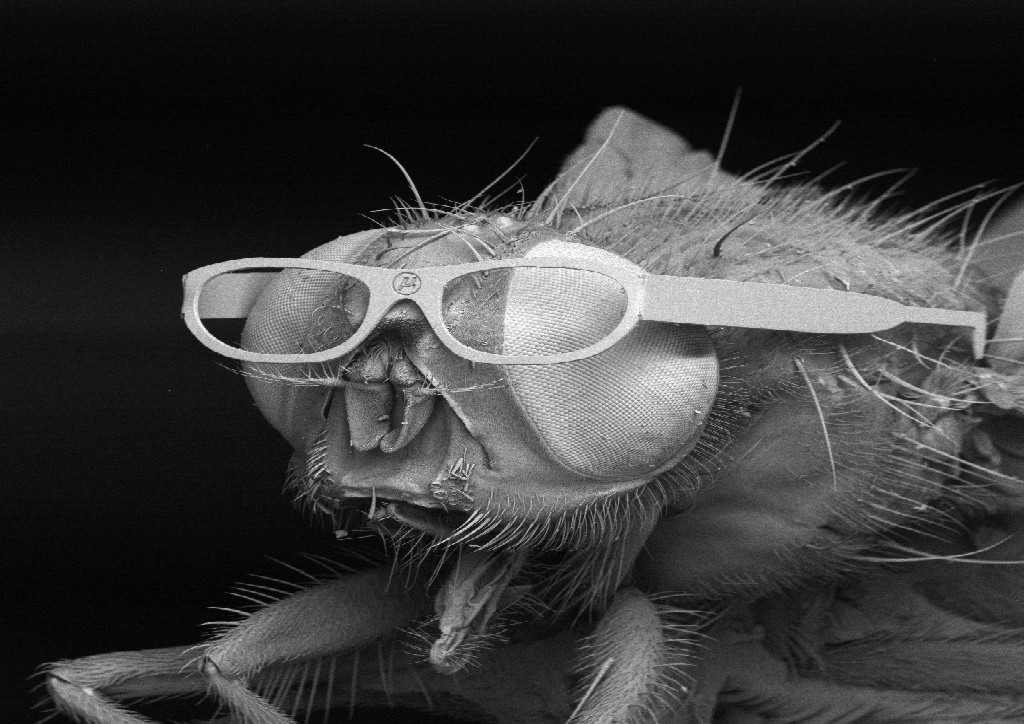
This picture made the startup company Micreon a crowd-puller at the “Laser” trade fair.
Several times a day we receive welcome requests for the publication of technical papers. The conditions regarding scope and deadline are usually specified. However, pictures are always a condition. No picture, no article.
Perhaps you also know this hint from an editorial office:
“Please make sure to include suitable image material in your request, preferably in landscape format. Without a picture, the article will not be accepted.”
If we don’t provide a suitable picture, the editor will rummage in the database for a suitable motif, but only if he means well. In large editorial departments, this is the job of the picture editor. In small editorial departments, the editor does it himself. Stock material, in order to be used frequently, must be generally pleasing. The visual persuasiveness of stock photos is rather low.
The main problem here is that the most communicatively powerful component of an article benefits neither the company nor the products. A wasted PR opportunity.
More and more images are being demanded of companies and organizations, partly because the battle for attention is raging in social media. It is being fought with images and videos. Anyone who depends on high follower numbers on Instagram & Co. must have a visual strategy.
Journalists Need Visuals
The need for good photos, infographics and illustrations has been great since the beginning of public relations. With the advent of social media and online media platforms in our society, the demand for good image PR is higher than ever. Editors now not only want images and infographics, but also videos that they can embed in their articles. This is again shown by the latest survey of German journalists by the PR service provider Cision. The German version of “2022 State of the Media Report – Fokus Deutschland” you can download here.
In fact, it is meanwhile pointless to use surveys and statistics to prove that journalists attach great importance to images. As already mentioned, the law applies to press work: no picture, no contribution. But statistics sometimes help PR managers to get the budget they need for press photos from their superiors.
Text and Picture Cost the Same
For press offices and PR agencies there should be no question as to whether a suitable picture will also be supplied with the text. Of course, no topic, should be the answer. The demand of the media is high. In the practice of PR, the hurdles for the two formats seem to be however different. A press release is commissioned and written faster and easier than a press photo. Both could happen at the same time. While the copywriter composes the press release, the photographer sets about creating a motif. Text and image are simultaneously coordinated internally, released and published together.
The costs for the external production of both materials are approximately the same. A good press text of an appropriate length of about 3,000 characters costs as much as a good photo. We assume that standard formats are quick and easy to produce. Photo shootings, as they are used for advertising, are not meant in this context.
Sure, it doubles the cost of a press release. But it multiplies the chances that the text will be considered at all. In this respect, we recommend that you rather do without press releases and instead invest in photo material for those who are really important to you.
Why isn’t it as simple as it could be?
In most cases, a company has a corporate design rulebook that defines font types, colors, and shapes, among other things. But seldom are guidelines set for a uniform, individual picture language. This lack makes it difficult for the photographer to produce suitable motifs in a short time. (Please read our interview with press photographer Erol Gurian on our blog).
In a corporate picture design, the picture language is outlined in line with the corporate design and corporate identity. This includes, among other things, photo style, perspective, staging of people, format variations, colorfulness, image division, clarity, background and emotionality. These aspects should best be worked out and defined together with the photographer. Once the style has been determined and suitably implemented, the production of all subsequent images will go smoothly.
Image PR: an art, but no witchcraft
 We have taken some facts and estimations from the standard publication about PR with pictures by Prof. Dr. Dieter Georg Adlmaier-Herbst and summarize them here. At the same time we would like to recommend the book to you for an entertaining reading about the basics for a professional picture PR.
We have taken some facts and estimations from the standard publication about PR with pictures by Prof. Dr. Dieter Georg Adlmaier-Herbst and summarize them here. At the same time we would like to recommend the book to you for an entertaining reading about the basics for a professional picture PR.
In order for you to be able to read this article more comfortably, we have refrained from using page references in consultation with the author.
The author Herbst offers you a variety of checklists to support you in practice. Among them are, for example, lists for image concepts, image composition and, above all, a list of points on how to brief a photographer. This will help you to be well prepared for the first meeting.
Facts about Human Reception
Subconscious evaluation
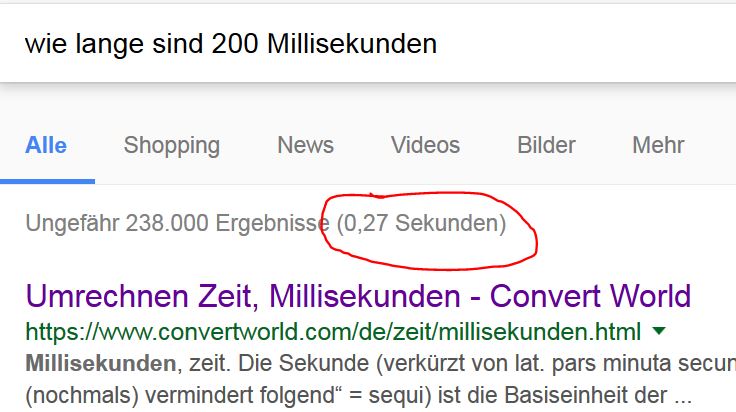
In the first 200 milliseconds the unconscious evaluation of a picture takes place. Only then does the conscious processing begin.
Try it out for yourself how unspeakably fast you can capture an image, for example with the Google search query “How fast are 200 milliseconds? (Well, the answer to this question can take a little longer in some regions of Germany. But the federal government is eager to change that – until, uh, 2030?)
Incredibly fast you have the result on the screen. This is the speed at which people unconsciously process images.
Rapid Reception of Pictures
Text meets picture: People perceive pictures 60,000 times faster than texts. Because this size category is not so catchy, it is supposed to illustrate it in a picture:
A snail is travelling at about three meters per hour. At its peak, a domestic cat can reach up to 50 km/h, i.e. 50,000 metres per hour.
If you want your message to be captured very quickly by the recipient, you are on the right track with professional picture PR and a good picture.
So if you want your message to be grasped very quickly by the recipient, you’re on the right track with professional visuals and a good image. Sure, some content is more complex than one or even several images are enough to get the point across. This is especially true for products that require explanation, such as those from information and communication technology, mechanical engineering and other B2B industries. A comprehensible, good text is indispensable for this. But to ensure that it is read at all, you can use a visual door opener.

Attention in Comparison

To which part of this page do readers pay how much attention?
According to Adlmaier-Herbst, an image ad is only paid attention to for a maximum of two seconds. Of this, 76 percent is spent on the image, 16 on the headline and only 8 percent on the text. But there is a serious difference between the perception of commercial ads and editorial content. Commercials, whether on television, radio, YouTube or print media, always hit us unbidden and unasked. The recipient mentally flees, fades out or switches away. With editorial articles, the recipient is more gracious.
He also accepts unsolicited information because he or she believes that the article has an independent information or entertainment value. This is also the case with advertorials. They are presented as editorial contributions and are ideally informative. However, the space for the reprint is bought, just like with an advertisement. (Please read our blog post about advertorials).
What is perceived consciously?

In this question, too, the image outclasses the text. Up to 70 percent of a picture’s information is consciously absorbed, but only two percent of the text. That corresponds to about seven words. Accordingly, only as much of the ad for Christmas decorations would remain as shown here. That’s not much.
In this example, however, the reader is not missing very much. It is only a short text, which is to inspire the desire for new creative Christmas decoration and tinkering fun. The medium could make this text much more effective and worth reading if it placed it as a caption. After all, captions are one of the components of an article that is viewed right after the picture.
This brings us to another important PR tool, the image dispatch. What do we mean by an image dispatch? It lends itself only when the image itself is the message. A longer accompanying text is not necessary. The explanation in the caption is minimally exhausted in answering the questions: who, what, when, where and how. Ideally, however, you use this image to arouse curiosity about the topic, the product, the event. That is the fine art of short texts.
Unconscious Processing: Control not Possible

Unlike text, images are processed unconsciously. They have an effect without our wanting or being able to control it. This is particularly important in crisis communication. Greenpeace has used visual material to establish its success story. The following example is very old, but it was probably one of the first events in which the impact of images became abundantly clear:
In 2010, the BP Group was responsible for the oil spill in the Gulf of Mexico. On April 22, 2010, the “Deepwater Horizon” platform exploded and around 800 million liters of crude oil gushed into the Gulf of Mexico. Eleven employees lost their lives. A devastating oil spill was the result. The horrific images from the news agencies went around the globe and caused one of the world’s largest oil companies to stumble. BP had nothing to counter the power of these images at the beginning of the disaster. Since then, the company’s crisis communication has been a textbook example of how not to do it, of how wrong communication only makes things worse.
How long do We remember?
 Here you can see a comparison of the liability behaviour of images and text: even after a week, the viewer remembers images even better than after five minutes of a text.
Here you can see a comparison of the liability behaviour of images and text: even after a week, the viewer remembers images even better than after five minutes of a text.
Images are like burrs for our brain, texts like dandelions. You know this fact from your own experience. There are images that you will never forget. This is only true for emotional images. Especially when a viewer is not prepared for disturbing photos or films, they frighten all the more. That’s also the reason why before inserting possibly incriminating and disturbing images, a warning is given.
From a biological point of view, it makes a lot of sense that people, for example, memorize dangerous situations long and deeply in order to avoid negative experiences in the future. But the world of media has to some extent reduced this brain function to absurdity. The violence we consume via media such as television, movies and magazines scares us, but usually has nothing to do with the reality of our own lives. The deep storage of negative emotional images is, to exaggerate, counterproductive for the individual life context today.
Facts about Press Pictures and more
Small Companies benefit from Picture PR
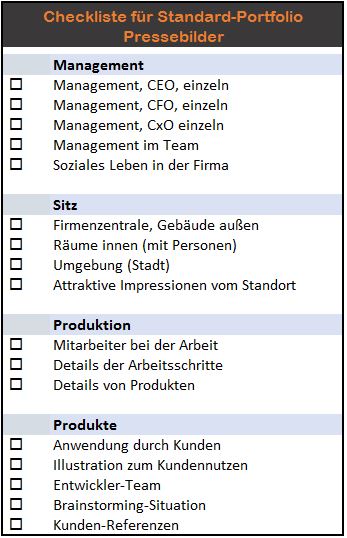
The smaller and more unknown a company or organization is, the more important is accentuated visual material. Let the photographer of your choice advise you on this. Together with the photographer, develop a consistent visual language that fits your corporate design and corporate identity. In social media marketing, it helps if you call an internal creative contest: ” Shoot something you think will illustrate us.” You’re sure to see surprising and quirky subjects.
For your professional press relations, you should keep high-quality standard material on hand and offer it in your press newsroom. The short list on the left offers you a colorful mix of formal and atmospheric motifs. Remember the motto: Nothing interests people as much as people. This will help you in the design and selection of photos.
Take inventory every now and then
Check your inventory from time to time, especially that which is online: What is current, what still fits the company? Create a spreadsheet and record what you are satisfied with as a PR expert, where you should rework and supplement. Also update captions in your newsroom. For example, some products no longer exist or have been replaced. Then you can add to the old versions: “Was available from to and has been replaced by version xy.” Proceed in the same way for personnel changes. Move the inactive photos to an online archive.
You can find a good photographer in your area through recommendations or via business networks such as Xing or LinkedIn. Ask to see references. Once you and your photographer are familiar with each other’s work and have agreed on a visual language, the rest, i.e. quick PR images for every press release, will go like clockwork.
The Power of the Editorial Staff
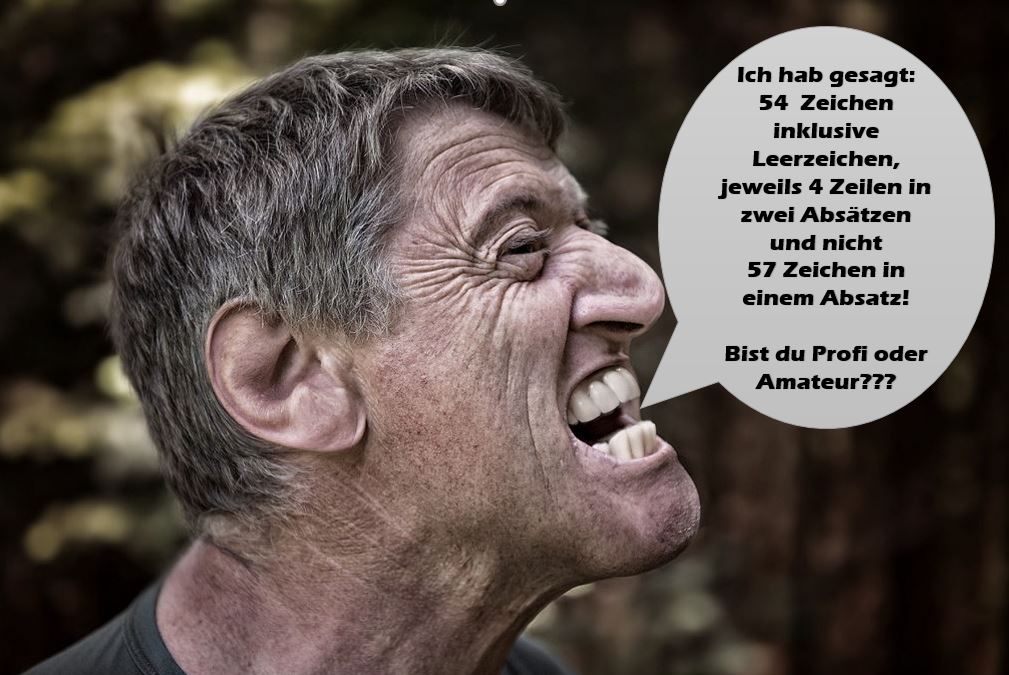
In the high-coverage image-oriented media, print and online, the image decides whether a news item is included or not. Text editing must subordinate itself to the layout specifications. The layout editor determines the layout of the pages – from the length of the headline and the number of characters to the length of the caption.
The picture editor selects the motifs. For this purpose, the picture editor has access to an extensive database of keyworded pictures. (Please also read the chapter on IPTC metadata below and our blog post “Crash course: Using metadata to harness the SEP potential of photos and images“).
Stock Pictures: Yes, but not for Press Photos

So-called stock material, i.e. photos, graphics and videos that you can purchase on platforms like iStock or mostly royalty-free on Pixabay or Unsplash, are just interchangeable visuals and have no relation to your business. Sometimes there is no way around it because you need suitable illustrations quickly for social media or your newsletter. In that case, you can resort to it. In the case of press images, you should do without it and invest in good photographers and individual material in good time. Take into account that with your own good photo you are using the most important part of a press article for your organization. Not to mention that with a press photo you basically increase the chance that your release will be published.
When Facts matter: Illustrations and Infographics

Sometimes photos are not the best way to convey content. If you want to make complex and a lot of information clearly structured and easy to read, illustrations and infographics are much more suitable. You should get support from professional graphic designers.
This infographic was developed and implemented by vibrio for its ex-customer Schreiner Group. A panel summarizes the most important facts about the Bavarian family-owned company with global operations. It provides a pointed overview with bolded figures and graphs and thus replaces or complements a detailed text about the business unit.
Advertising Photos are not Press Pictures
“Big logo, nothing behind it” is how journalists’ criticism of press images and press releases could be summed up. Stefan Brunn and Mathias Wolff appeal to press offices: “And remember: advertising, stock and product photography have little to do with press photography. You can usually do without supermodels – they look too much like advertising. The brighter and whiter the models’ smiles, the less chance they have of being published.”
Don’t send journalists ad designs, promotional material – unless you’re pitching your new campaign to the marketing press. Trade press and special interest media want to inform their readers factually. The advertising departments in the media are responsible for the commercial part.
IPTC in the press image is mandatory, not optional
Even professional photographers often do not fill in the data that is so important for editorial offices. Therefore, make sure that your press photos contain this information. IPTC is the abbreviation for International Press Telecommunications Council and known to image PR experts. The information is internationally valid and understandable.
Editors receive thousands of pictures per day
Every day, large editorial offices are flooded with picture material. It doesn’t just come from companies and PR agencies. The biggest suppliers are news agencies like dpa, Reuters or AP. The editors, who view the material, are interested in its topicality and quality and then decide whether it will be used or not.
If there is no current reason for this, the image is moved to the image archive once the metadata has been filled in. If this is not the case, there is a high risk that the image will simply be deleted because the post-processing would be too time-consuming.
How to fill out the IPTC metadata
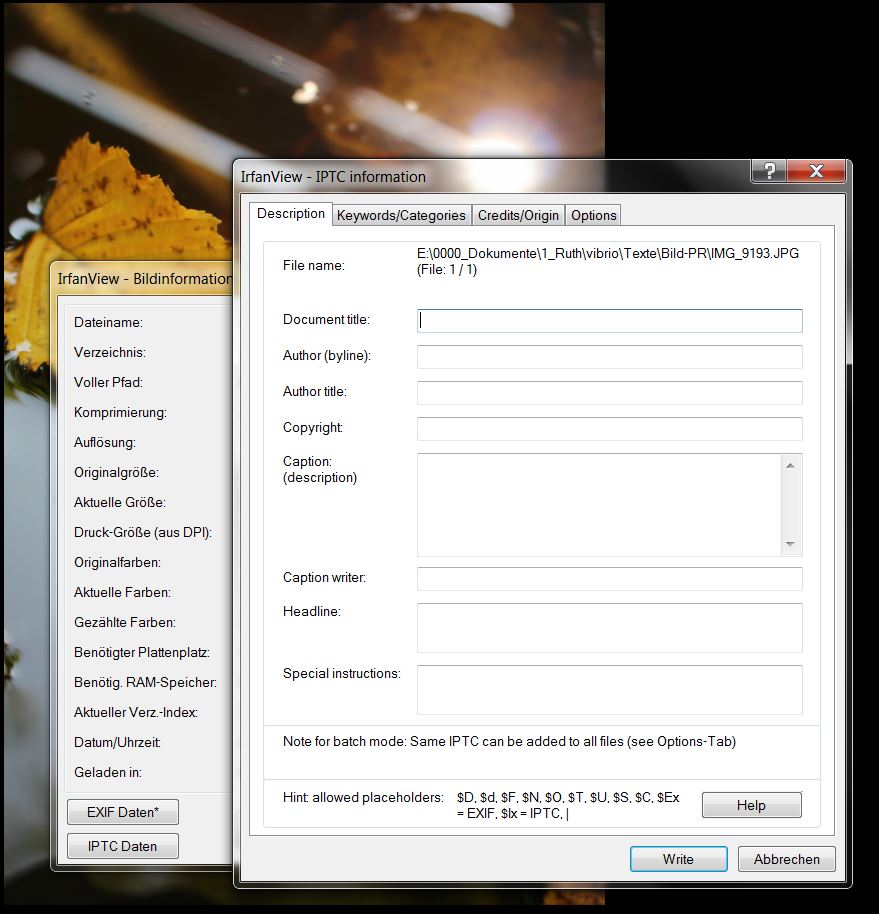 The information about the author and the conditions under which the image may be used are therefore particularly important. Does the author demand a fee for printing or is it free of charge? You can determine this in the image information.
The information about the author and the conditions under which the image may be used are therefore particularly important. Does the author demand a fee for printing or is it free of charge? You can determine this in the image information.
When you have called up the picture information, click on “IPTC data”. You will receive a menu with four table tabs. The most important page is the first tab “Description“. This is about copyrights, permission for use and a picture description, which are very helpful for editorial offices in their research.
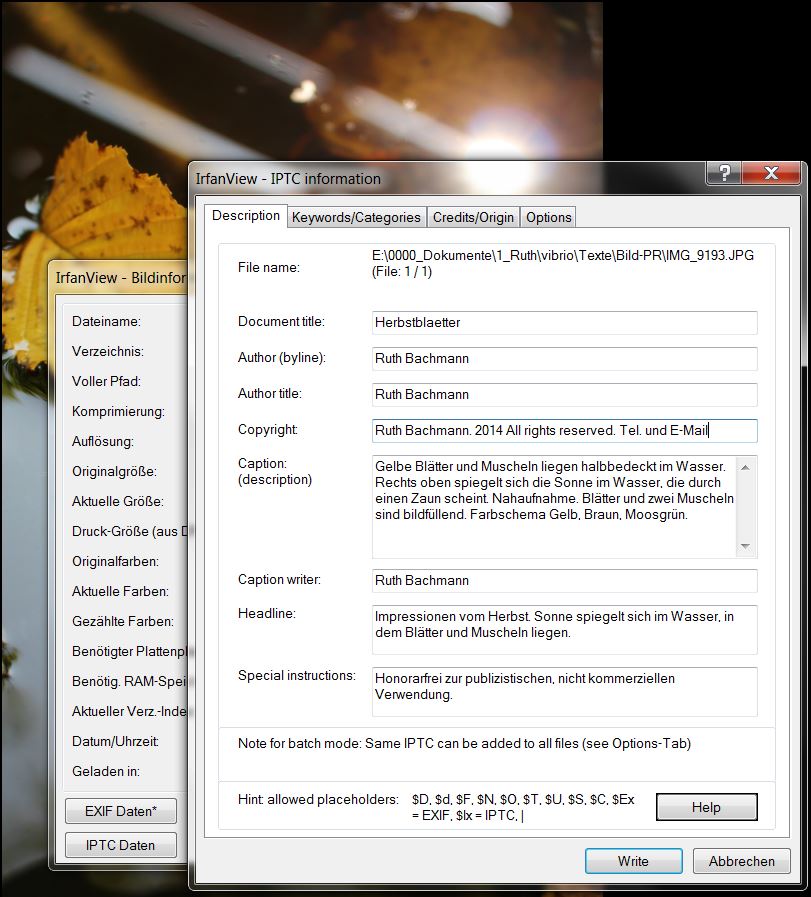
Your press photos should, for example, contain at least the following information: “Use free of charge for journalistic, non-commercial purposes”. This means that every editor who finds your motif interesting knows that he does not have to make an effort to clarify the fee question by e-mail or telephone, but can use it without hesitation.
This may seem like a trifle, but given the time pressure journalists work under today, it can be crucial for publication.
How to start with Your Picture PR
Was ist Bild-PR?
Within public relations, the term is primarily assigned to press relations and is an essential PR tool. Separated from this is visual material created for social media. Image PR includes photos, illustrations and graphics that are conceived and designed in a corporate picture design. The visual material should thus be clearly attributable to an organization and contribute to brand recognition. Press images have different characteristics depending on the media category and market segment. While they are primarily informative in the business-to-business sector, organizations in the business-to-consumer sector tend to choose emotional motifs. Press images are a necessary companion to press releases or are sent on their own as image mailers to the relevant media. Press images always have completed IPTC metadata, which gives the journalist clear information about the creator, the source and the rights of use in terms of fee and period of use.
Was bringt Bild-PR?
The great importance of image PR is derived from the facts of human perception: You can use it to address readers and interest them even in complex topics that need more than a photo story on Insta. You will find a place in the media for your news and expertise faster and easier. This is because you are following the requirements of the media makers, who are guided solely by the needs of their readers. So image PR is crucial to how far your arm reaches into your market. Let’s take a look at human perception: brain activity is different when reading text than when looking at emotional images. We’ve only known text for a short time. Modern humans begin with Homo sapiens about 300,000 years ago. But how long has writing been around? A meager 7,300 years. The text age began less than 600 years ago. Writing has to be learned; the perception and interpretation of sounds and images is genetically anchored. Therefore, use the fastest and most intensive PR instrument, the image.
Was kosten Pressebilder?
To give you an idea despite all the variables that go into a photo shoot, calculate a daily rate of around 1,000 euros for an external photographer. This is a realistic and fair price. How much the cost pendulum swings up or down depends on many factors, but it’s best to clarify them directly in conversation with your photographer. Together you can find out how the expenses for the shooting of your products, premises, buildings or employees can be reasonably minimized. Take into account that your photographer also needs the time to get to know your organization. After all, the press photos must fit your corporate identity, and a corporate picture design must be developed if you have not yet defined one. Experienced professionals, however, will guide and advise you so well that you will only have to spend a little time on the briefing yourself. Once you are a well-rehearsed team, the updates of your press photos will become easier and easier.
